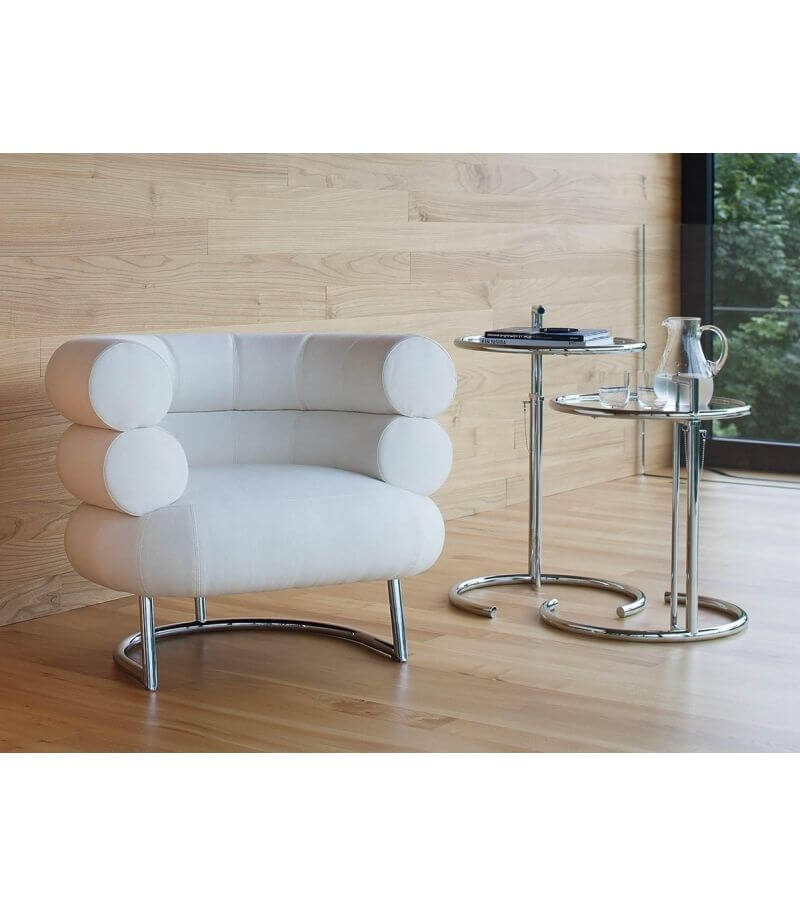Eileen Gray (born 9 August 1878 – died 31 October 1976) was an Irish architect and furniture designer who became a pioneer of the Modern Movement in architecture. Her most famous work is the house known as E-1027 in Roquebrune-Cap-Martin, France. A contemporary of Le Corbusier, Marcel Breuer and J.J.P. Oud, Gray was a pioneer of tubular steel and glass furniture and her architecture projects, including two houses in the Alpes Maritimes in southeast France, are now considered among the most outstanding examples of modernism from the interwar period.
Interior design
In 1917, Gray was hired to redesigning the Rue de Lota apartment of society hostess Juliette Lévy. The furniture included some of Gray’s best known designs – the Bibendum Chair and the Pirogue Day Bed. The Bibendum chair was a take on the Michelin Man with tire like shapes sitting on a chromed steel frame.
The critical and financial success of the project prompted Gray to open her own shop in 1922. Early on Gray used luxurious materials like exotic woods, ivory and furs. In the mid-1920s, her pieces became simpler and more industrial. This reflects her growing interest in the work of Le Corbusier and other Modernists, who valued utility and mathematical principles over ornamentation.
E-1027 house by Eileen Gray

© Manuel Bougot
In 1926, she started work on a new holiday home near Monaco to share with Romanian architect Badovici. The house was given the enigmatic name of E-1027. It was code for the lovers’ names; the E standing for Eileen, the 10 for J, meaning Jean, the 2 for B standing for Badovici and the 7 for G standing for Gray. E-1027 is described as a modernistic masterpiece. By this point, Gray was fascinated by lightweight, functional, multi-purpose furniture which she called “camping style”.
© Manuel Bougot
About the Author:

Bruno Dursin – Managing Director at Believe in Steel. Bruno has more than 30 years of experience in promoting steel & steel solutions. His clients benefit from his extensive network within the building industry.








